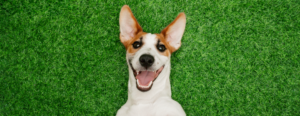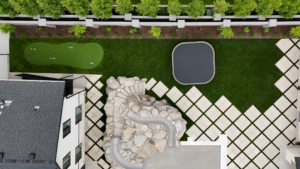Many homeowners and landscapers face the challenge of transforming sloped terrain into beautiful, functional outdoor spaces. The good news? Installing artificial turf on a slope is not only possible but can provide stunning results when done correctly. With proper planning and techniques, placing artificial grass on a slope can solve drainage issues, prevent erosion, and create an attractive landscape that requires minimal maintenance.
Assessing Your Sloped Landscape for Artificial Turf Installation
Before diving into how to lay turf on a slope, it’s crucial to evaluate your terrain. Slopes with gradients up to 40 degrees can typically accommodate artificial turf on a slope installation, though steeper inclines may require specialized techniques and additional materials.
Key factors to consider include:
- Soil stability and composition
- Drainage patterns and water flow
- Existing vegetation and debris
- Access for equipment and materials
- Local building codes and regulations
Understanding these elements helps determine whether your slope is suitable for synthetic grass and what specific graded landscape turf solutions will work best for your project.
Preparation Steps for Installing Artificial Turf on a Slope
Proper preparation is essential for the successful installation of fake grass on a slope. Begin by clearing the area of all vegetation, rocks, and debris. This step prevents future settling and ensures a smooth, stable foundation.
Next, grade the slope to achieve consistent drainage while maintaining structural integrity. For artificial grass for uneven terrain, you may need to add or remove soil to create the optimal surface. Compact the soil thoroughly, paying special attention to preventing future erosion issues.
Install a quality base material, typically crushed stone or decomposed granite, which provides stability and promotes proper drainage. This foundation layer is particularly important when laying fake grass on a slope, as it helps distribute weight evenly and prevents shifting over time.
Anchoring Techniques for Securing Turf on Inclines
The challenges of sloped turf installation center largely around preventing the turf from sliding or bunching. Professional installers use several proven methods for securing turf on inclines:
- Landscape staples and nails should be placed every 6-8 inches along the perimeter and seams, with additional fasteners throughout the field area. For steeper slopes, increase fastener density to ensure maximum hold.
- Transition strips and bender boards create clean edges and provide additional anchoring points. These materials help maintain turf tension and prevent lifting during wind or weather events.
- Seaming techniques become critical on slopes, as improperly joined sections can create weak points where separation may occur. Professional-grade adhesives and double-sided seaming tape provide the strongest connections for installing turf on slopes.
Maintenance Considerations and Erosion Control with Synthetic Grass
One significant advantage of artificial turf on a slope is reduced maintenance compared to natural grass. However, slopes do require specific care considerations. Regular brushing helps maintain pile direction and prevents matting, especially important on inclines where foot traffic patterns may be inconsistent. Still, it’s much easier than mowing sloped lawns.
Erosion control with synthetic grass is highly effective, as the permeable backing allows water to drain while the turf surface prevents soil displacement. This makes synthetic grass an excellent choice for slopes prone to washouts or erosion issues.
Inspect fasteners and seams periodically, as thermal expansion and contraction can affect connections over time. Address any lifting or separation immediately to prevent larger problems from developing.
Pros and Cons of Slope Turf Installation
Advantages include:
- Excellent erosion control and soil stabilization
- Reduced maintenance compared to natural grass slopes
- Consistent appearance regardless of growing conditions
- Improved safety with better traction than natural grass on slopes
Considerations include:
- Higher initial installation costs due to specialized techniques
- Potential for heat retention on sun-exposed slopes (although newer turf types have made strides in reducing heat retention)
- Need for extremely precise or professional installation for best results
- Drainage planning becomes more critical
Frequently Asked Questions
Is it possible to install artificial turf on steep slopes?
Yes, artificial turf can be installed on slopes up to 40 degrees with proper preparation and anchoring techniques. Steeper slopes may require specialized installation methods and additional materials for secure attachment.
What are the main challenges when installing fake grass on uneven terrain?
The primary challenges include ensuring proper drainage, preventing turf movement or bunching, achieving a consistent appearance across varying elevations, and providing adequate anchoring to resist sliding or lifting forces.
How do I prevent artificial grass from sliding down a slope?
Use increased fastener density (every 6-8 inches), install transition strips at the top and bottom of slopes, ensure proper base preparation, and consider professional installation for slopes steeper than 20 degrees to guarantee secure attachment and long-term stability.
Thinking About Installing Artificial Turf on a Slope?
If you’re wondering whether artificial turf is the right choice for your sloped terrain, you can always reach out to the experts at Elite Turf Supply–they have years of experience with sloped turf projects and can answer your questions.



